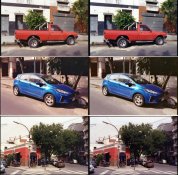Lemur
Member
How do you know if Kodak Flexicolor chemicals are still working properly? (before processing important negatives)
For instance:
- Developer (not mixed): I recently posted a thread about D-76 and based on the comments of fellow posters I developed a leader in ambient light to see if it got black at the indicated time. Can I do the same test with color developer? Of course, I could also, apart from this test, process a couple of images. But I like the test because it gives you a good indication before processing any images.
- Bleach (not mixed): …?? The color? Another indication?
- Fixer (mixed with water): Can the clearing time test be used with color fixer? How is the calculation? I just posted another thread about this.
- Final Rinse (not mixed): …?? Is it good for ever?
For instance:
- Developer (not mixed): I recently posted a thread about D-76 and based on the comments of fellow posters I developed a leader in ambient light to see if it got black at the indicated time. Can I do the same test with color developer? Of course, I could also, apart from this test, process a couple of images. But I like the test because it gives you a good indication before processing any images.
- Bleach (not mixed): …?? The color? Another indication?
- Fixer (mixed with water): Can the clearing time test be used with color fixer? How is the calculation? I just posted another thread about this.
- Final Rinse (not mixed): …?? Is it good for ever?













